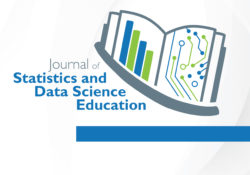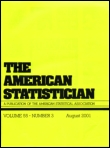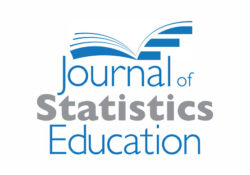tandfonline.com har udgivet en rapport under søgningen “Teacher Education Mathematics”: ABSTRACT ABSTRACT Gender bias in teaching materials may influence students’ development and contribute to social inequalities. This study investigates possible gender bias in a newly published English textbook series in Vietnam. Holding gender as a social construct, the research uses a multimodal critical approach to examine language and ideological systems. The results show despite some effort for gender equity, the making of textbooks in today’s Vietnam is still affected by patriarchal Confucian values. Males inhabit bigger verbal space and have more social properties. Females are portrayed as less independent; their choices are more limited, and with less resources. Textbook author interviews show the writing was influenced by conscious and unconscious bias, but they agreed gender equality is important, although male domination… Continue Reading →
Like this:
Like Loading...
eric.ed.gov har udgivet: The underrepresentation of women and racial and ethnic minorities in computer science (CS) and other fields of science, technology, engineering, and math (STEM) is a serious impediment to technological innovation as well as an affront to fundamental notions of fairness and equity. These gaps emerge in the early grades and tend to persist, if not widen, throughout the secondary and postsecondary years. The unconscious biases (UB) of teachers, school administrators, and fellow students may contribute meaningfully to the persistence of these gaps. Fortunately, a nascent literature on targeted interventions that directly address UB suggests there may be compelling opportunities to promote broader engagement in CS and STEM education and employment. The fields of neuroscience, social psychology, economics, and sociology articulate the many possible origins of UB and… Continue Reading →
Like this:
Like Loading...
tandfonline.com har udgivet en rapport under søgningen “Teacher Education Mathematics”: Link til kilde
Like this:
Like Loading...
eric.ed.gov har udgivet: School districts and states across the Regional Educational Laboratory Mid-Atlantic Region and the country as a whole have been modifying their teacher evaluation systems to identify more effective and less effective teachers and provide better feedback to improve instructional practice. The new systems typically include components related to student achievement growth and instruments for observing and rating instructional practice. Many school districts and states are considering adopting commercially available instruments for the instructional practice component of their evaluation systems. Yet little data are available to help districts and states choose among available instruments or determine which dimensions of instructional practice merit the greatest emphasis. Most existing data comparing different observation instruments, including their statistical characteristics and their relationship to student achievement, come from the Bill & Melinda… Continue Reading →
Like this:
Like Loading...
tandfonline.com har udgivet en rapport under søgningen “Teacher Education Mathematics”: ABSTRACT Formulae display:?Mathematical formulae have been encoded as MathML and are displayed in this HTML version using MathJax in order to improve their display. Uncheck the box to turn MathJax off. This feature requires Javascript. Click on a formula to zoom. ABSTRACT Many players and fans of basketball believe in the “hot hand” phenomenon, yet for years there has been little statistical evidence that such a phenomenon exists (hence the “hot hand fallacy”). However, recent research of Miller and Sanjurjo suggests that previous analyses of the hot hand have been subject to a bias, and after correcting for this bias, there is in fact evidence that the hot hand is real. Miller and Sanjurjo’s analyses are based on permutation tests.… Continue Reading →
Like this:
Like Loading...
tandfonline.com har udgivet en rapport under søgningen “Teacher Education Mathematics”: Abstract Formulae display:?Mathematical formulae have been encoded as MathML and are displayed in this HTML version using MathJax in order to improve their display. Uncheck the box to turn MathJax off. This feature requires Javascript. Click on a formula to zoom. Bootstrapping has enormous potential in statistics education and practice, but there are subtle issues and ways to go wrong. For example, the common combination of nonparametric bootstrapping and bootstrap percentile confidence intervals is less accurate than using t-intervals for small samples, though more accurate for larger samples. My goals in this article are to provide a deeper understanding of bootstrap methods—how they work, when they work or not, and which methods work better—and to highlight pedagogical issues. Supplementary materials… Continue Reading →
Like this:
Like Loading...
tandfonline.com har udgivet en rapport under søgningen “Teacher Education Mathematics”: Abstract Formulae display:?Mathematical formulae have been encoded as MathML and are displayed in this HTML version using MathJax in order to improve their display. Uncheck the box to turn MathJax off. This feature requires Javascript. Click on a formula to zoom. Abstract Basic knowledge of ideas of causal inference can help students to think beyond data, that is, to think more clearly about the data generating process. Especially for (maybe big) observational data, qualitative assumptions are important for the conclusions drawn and interpretation of the quantitative results. Concepts of causal inference can also help to overcome the mantra “Correlation does not imply Causation.” To motivate and introduce causal inference in introductory statistics or data science courses, we use simulated data… Continue Reading →
Like this:
Like Loading...




